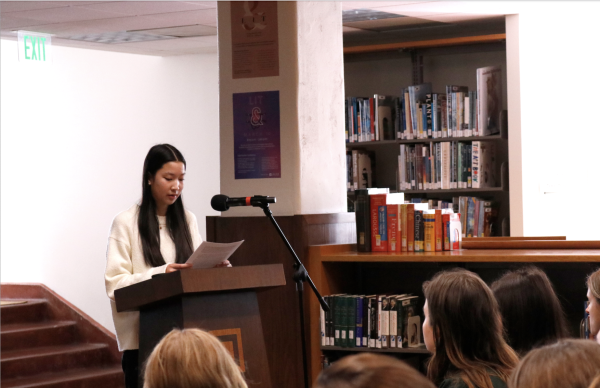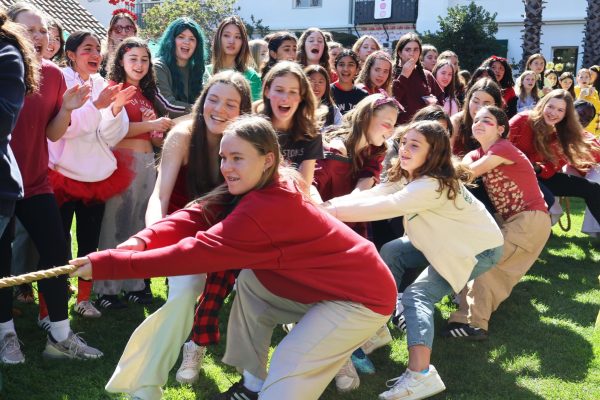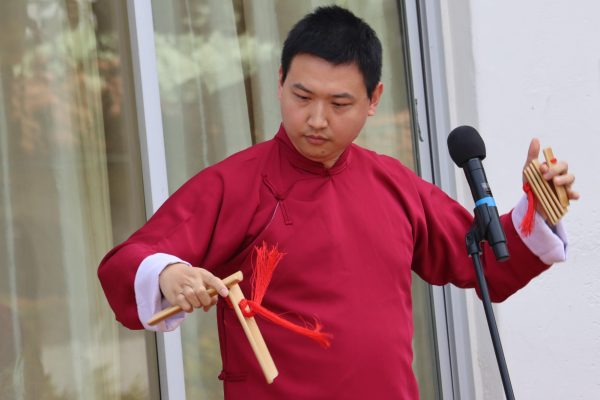Freshmen attend panel discussion on religion
Photo credit: Grace Dieveney
The religious panel, including Amy Bernstein, Matilda Buck, Terri McCaskill and Tasneem Noor, presents to the freshman class. Each woman discussed a different religion: Judaism, Buddhism, Christianity and Islam.
Since 2014, Archer’s ninth grade curriculum has included the history course Understanding the Contemporary World. As part of the course’s culture and religion unit, the grade gathered in the Rose Room during X-Block to hear from four female religious leaders on Nov 11.
Amy Bernstein, a senior rabbi, represented Judaism. Women’s leader Matilda Buck answered for Buddhism. Terri McCaskill, a children’s pastor at the Faithful Central Bible Church in Inglewood, for Christianity. Tasneem Noor, also known as The Faith Connector, spoke for Islam. The four women spoke about how they use service to share their religion with others.
McCaskill shared her personal experiences with God and religious outreach work.
“I love what I do. It is very rewarding,” McCaskill said. “I get to share [my religion] with others.”
Noor shared what worship means to her and how she incorporates it into daily life. A main component of her worship is service and helping others.
“When I pray, I am worshipping. If I smile at you in an action of support, I am worshipping. If I am here with the intention of being of service, I am worshipping,” Noor said. “I can be worshiping anywhere, anyhow in so many different ways.”
When the panel came to a close, the crowd cheered loudly as history teacher Meg Shirk thanked the leaders. The students later reflected on the panel during a class discussion and learned how service can be integrated into their culture and religion unit.
Shirk, who teaches Understanding the Contemporary World, organized the panel to give students to give a chance to hear about religion from primary sources.
“My main goal was for the students to see that with most religions there are more similarities than differences and that at the core of each religion there are a lot of great core messages,” Shirk said. “I wanted to show religion in a really empathetic and understanding way, which is not seen a lot in the media.”

Grace Dieveney became a member of the Oracle in 2017. She enjoys cooking, reading, writing, swimming, and volunteering at the Wallis Annenberg Pet Space....




![Freshman Milan Earl and sophomore Lucy Kaplan sit with their grandparents at Archer’s annual Grandparents and Special Friends Day Friday, March 15. The event took place over three 75-minute sessions. “[I hope my grandparents] gain an understanding about what I do, Kaplan said, because I know they ask a lot of questions and can sort of see what I do in school and what the experience is like to be here.](https://archeroracle.org/wp-content/uploads/2024/03/grandparents-day-option-2-1200x800.jpg)











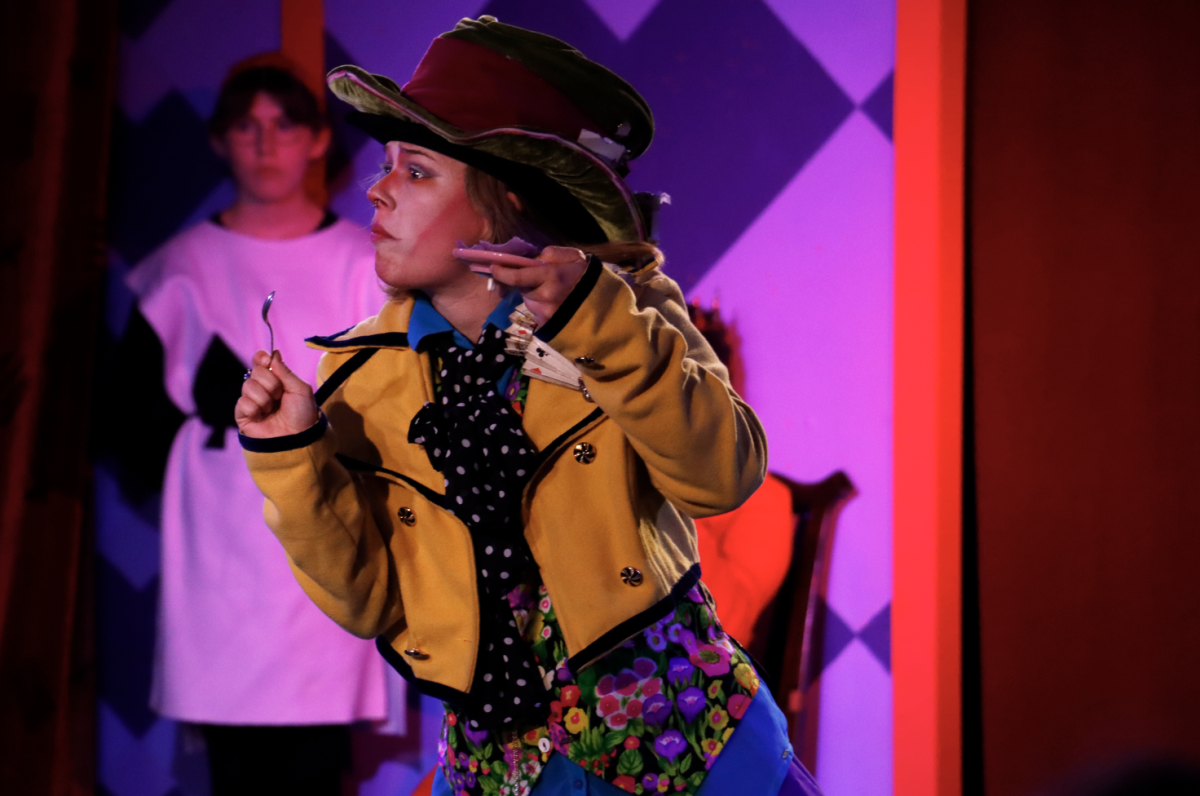


































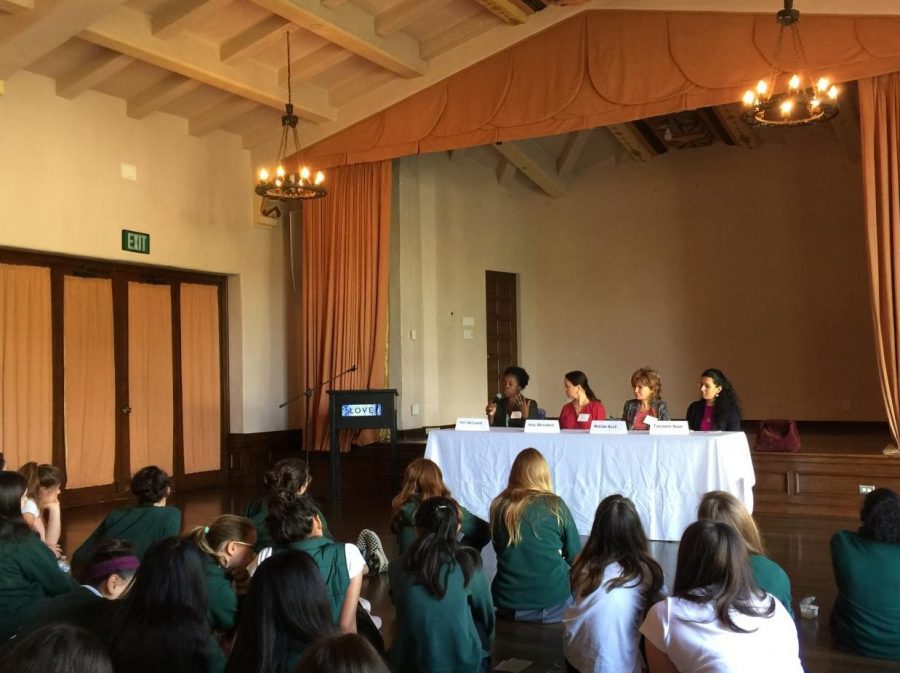


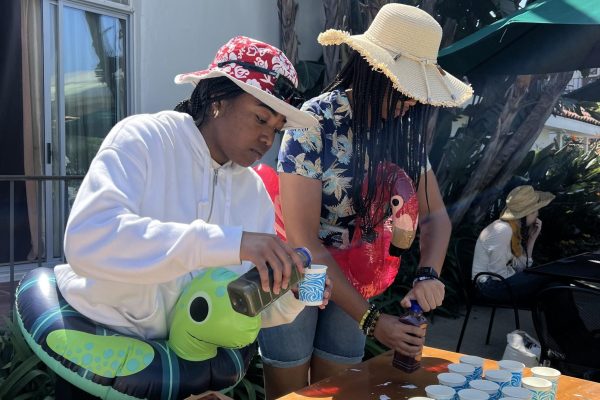
![Freshman Milan Earl and sophomore Lucy Kaplan sit with their grandparents at Archer’s annual Grandparents and Special Friends Day Friday, March 15. The event took place over three 75-minute sessions. “[I hope my grandparents] gain an understanding about what I do, Kaplan said, because I know they ask a lot of questions and can sort of see what I do in school and what the experience is like to be here.](https://archeroracle.org/wp-content/uploads/2024/03/grandparents-day-option-2-600x400.jpg)
